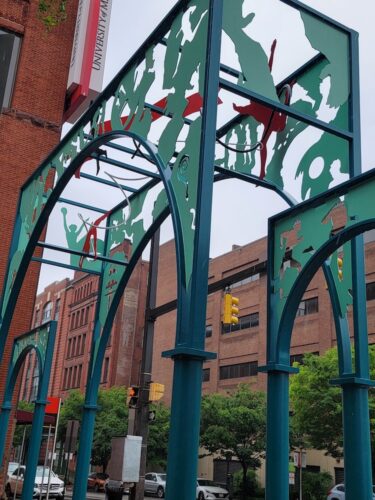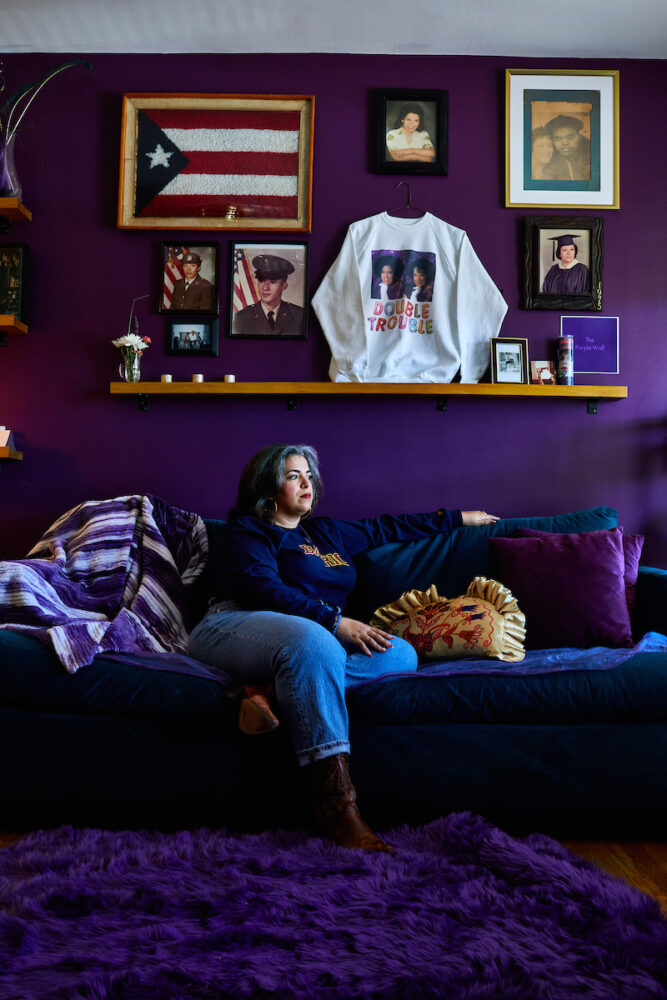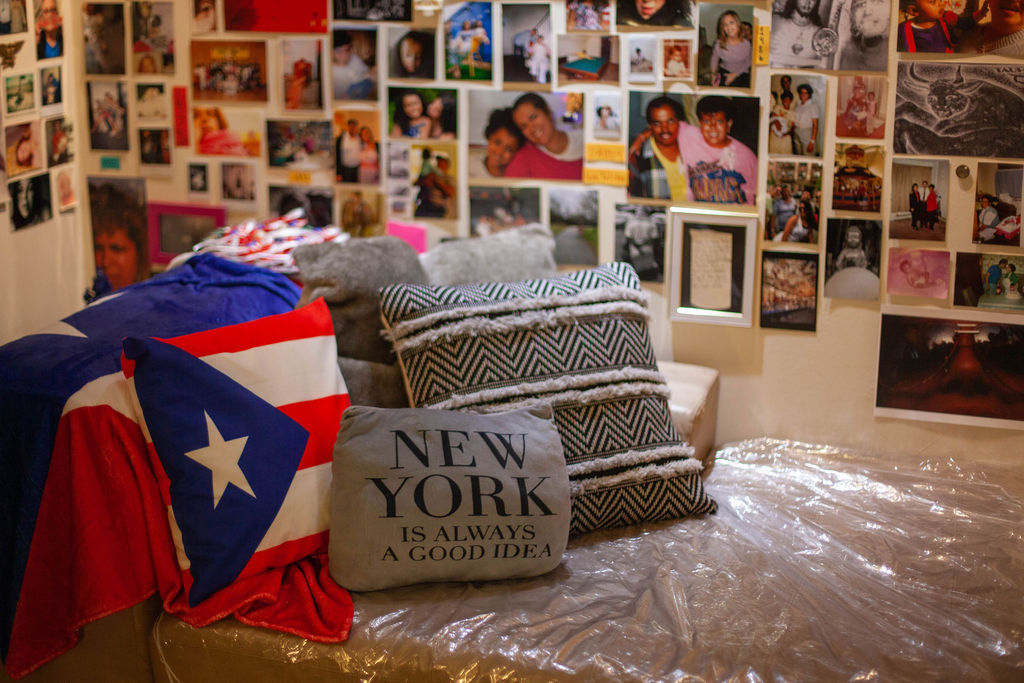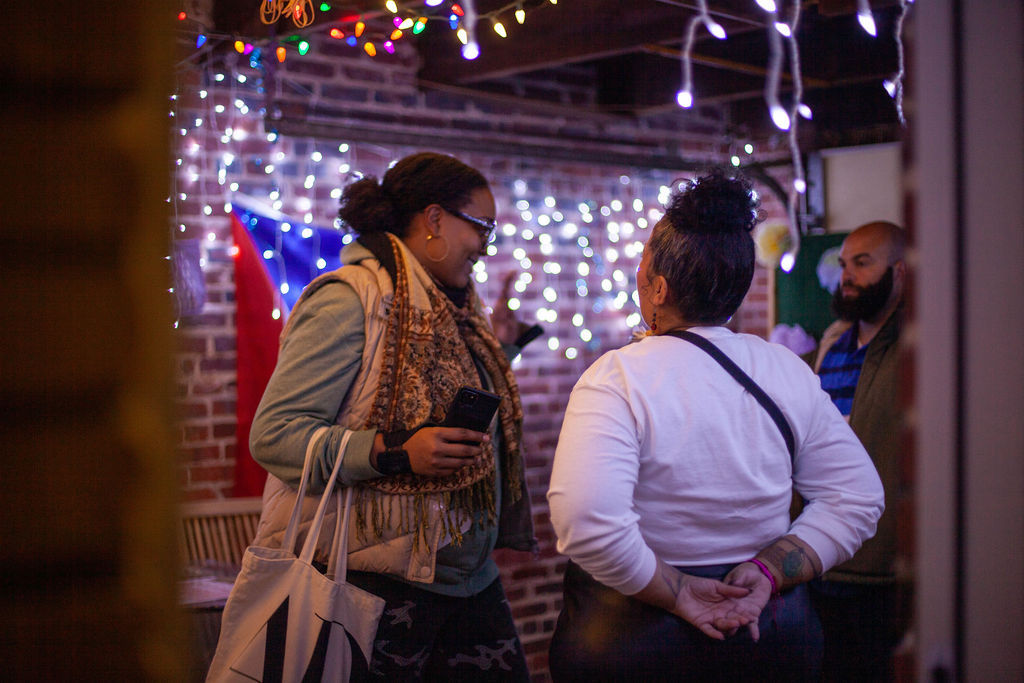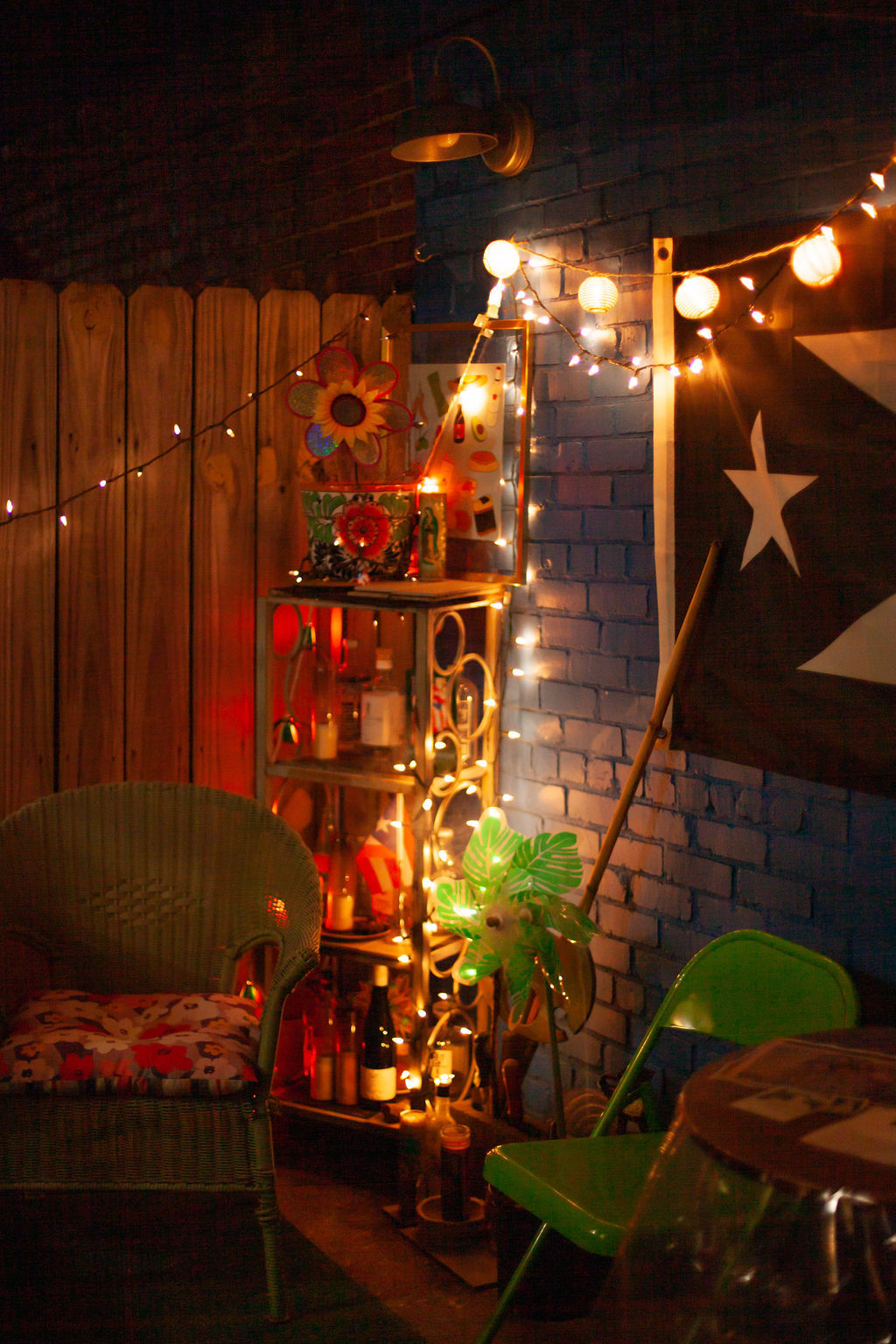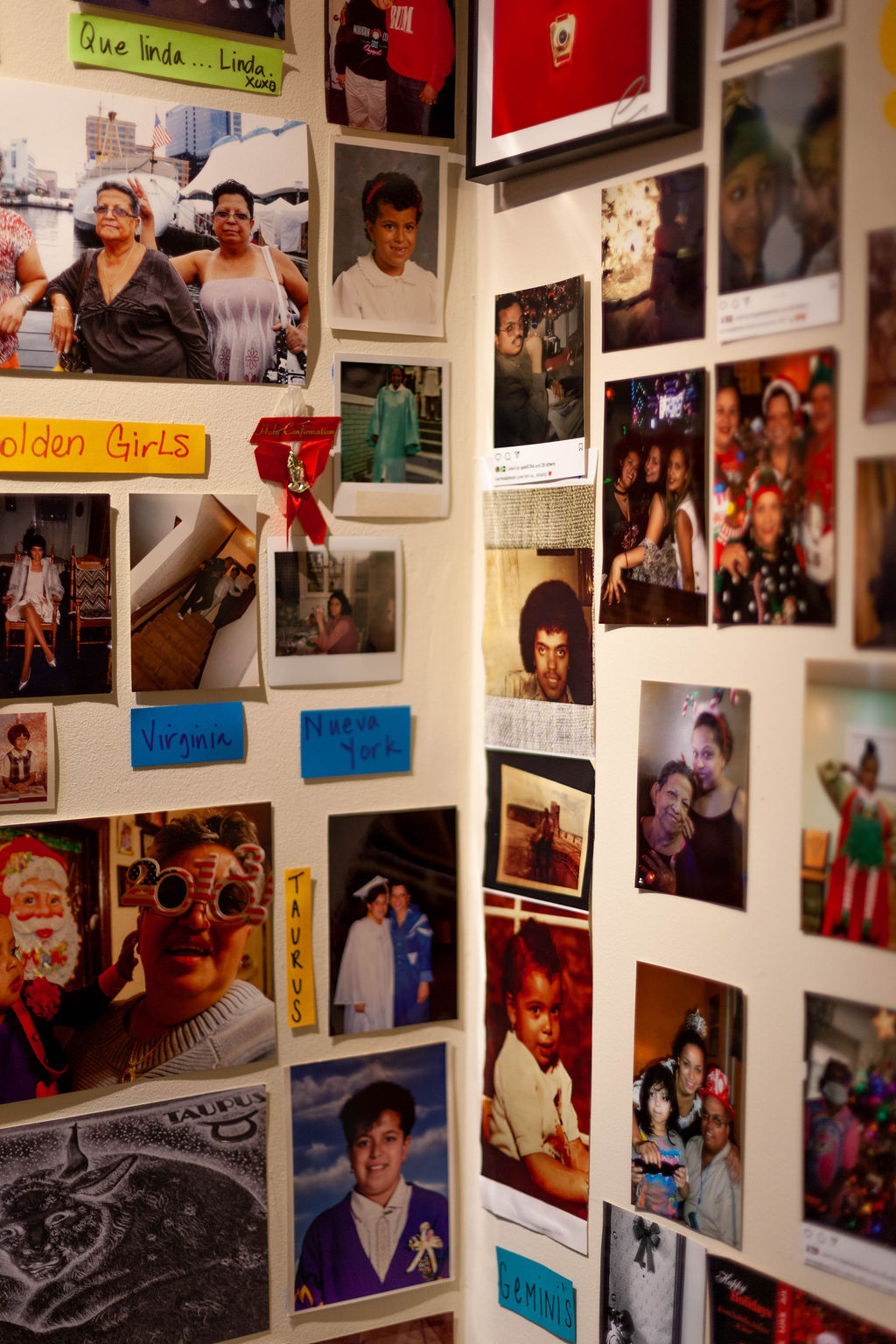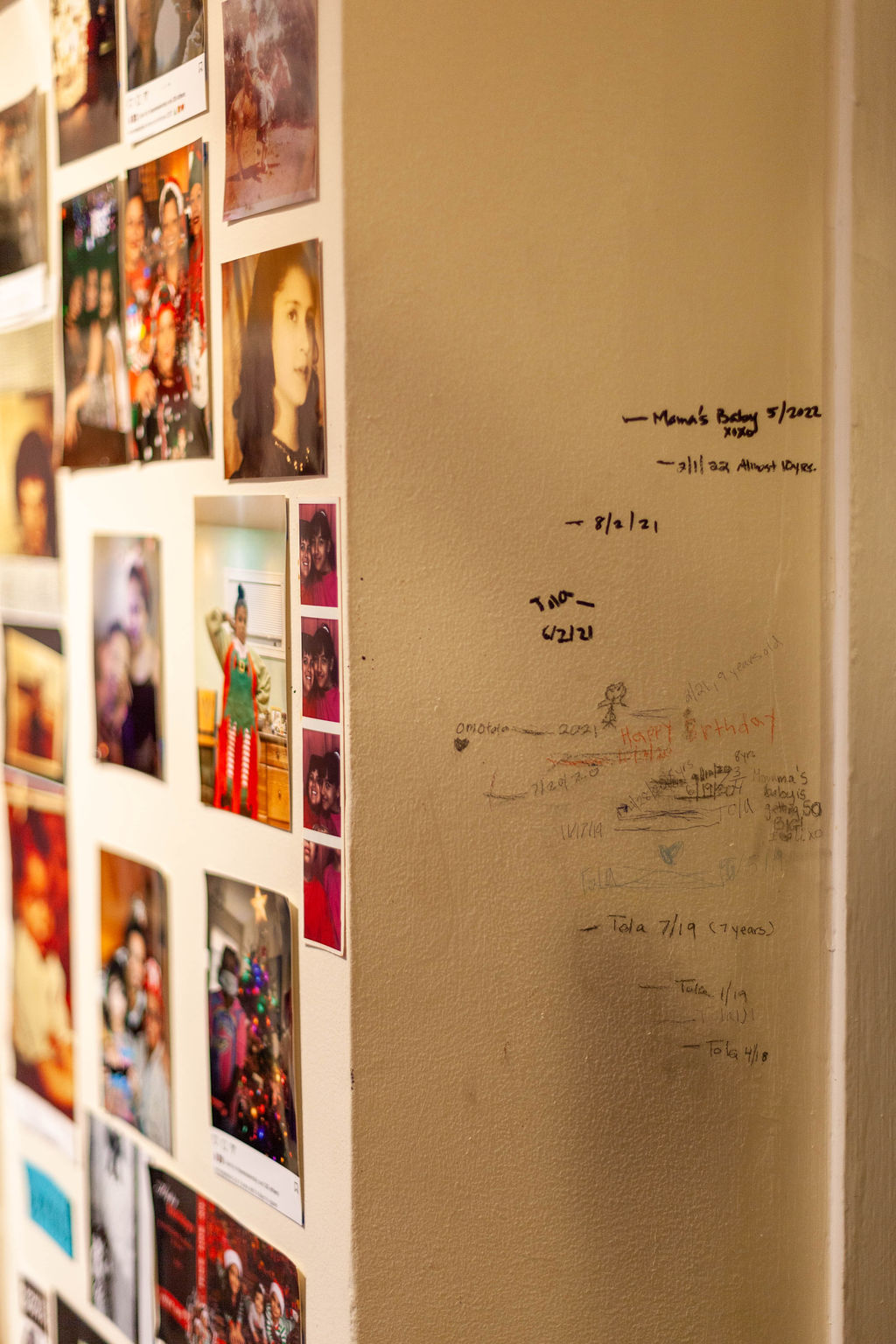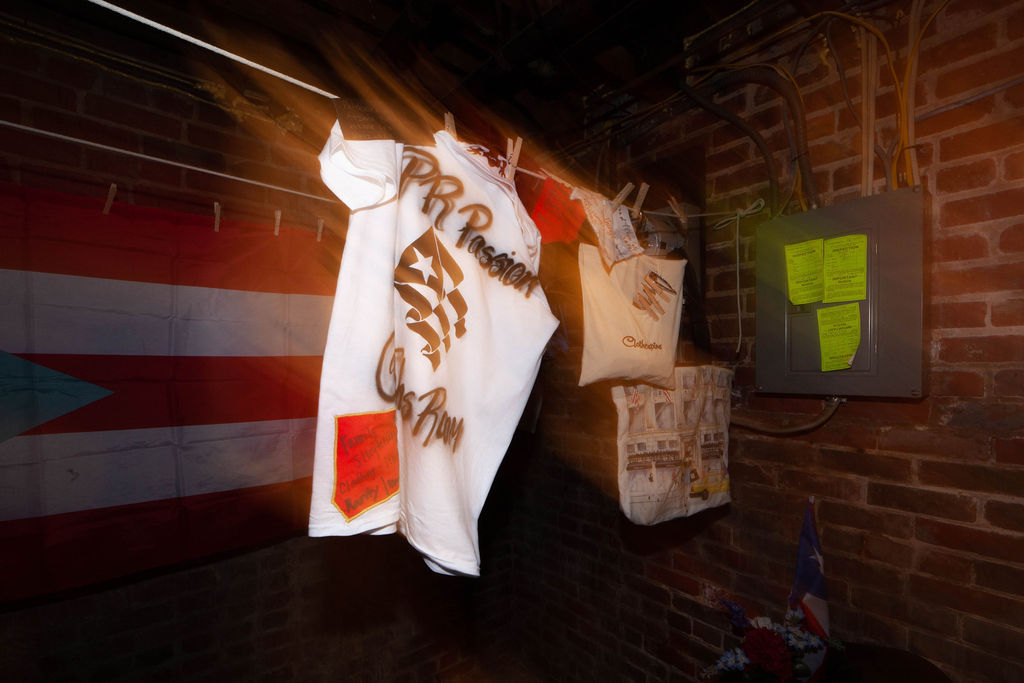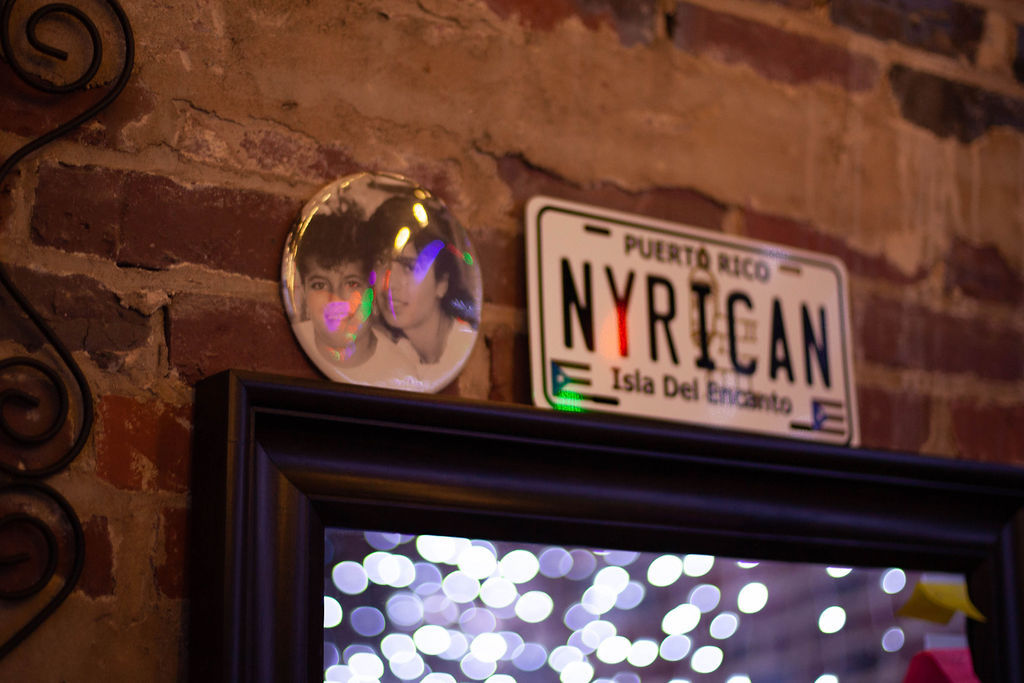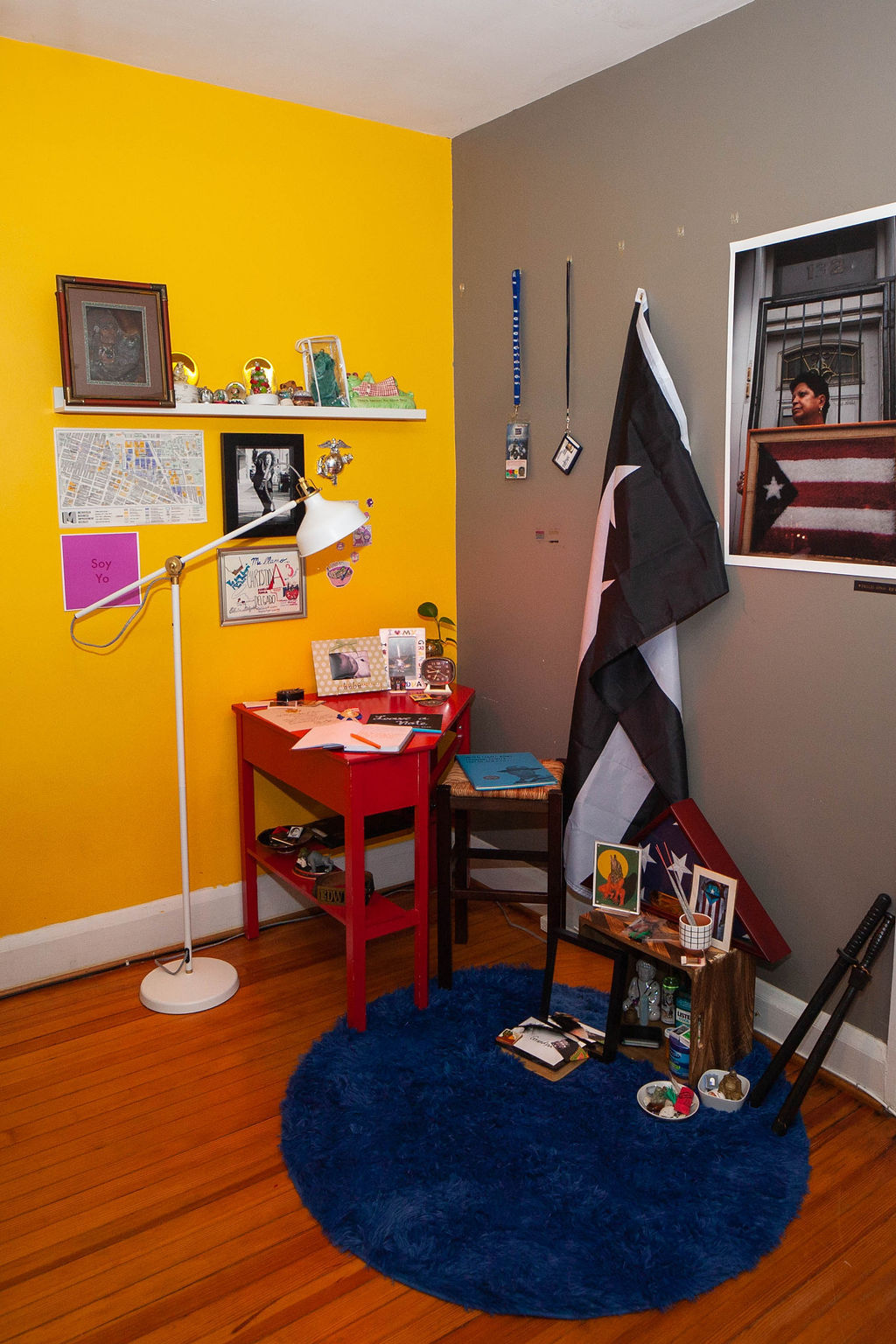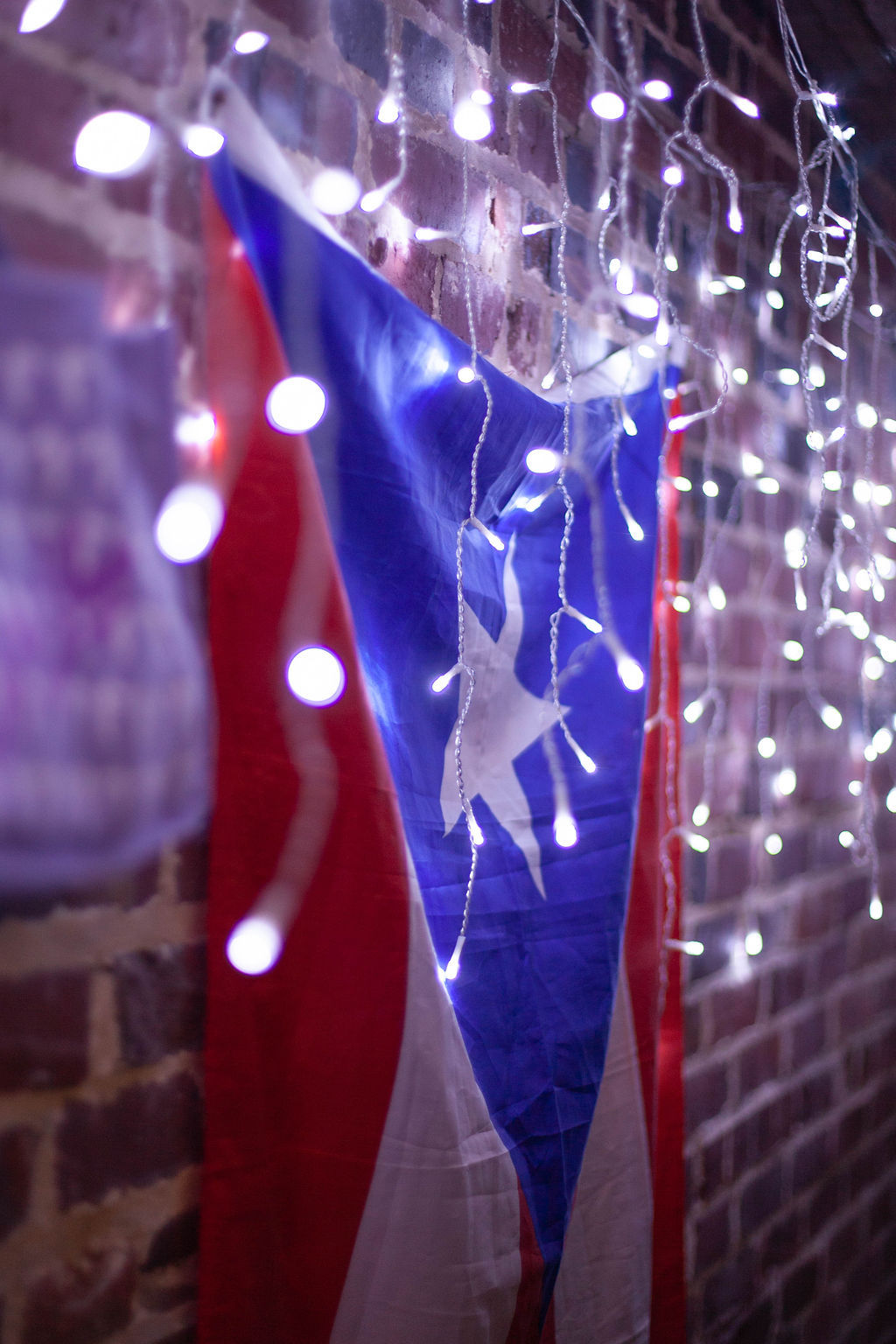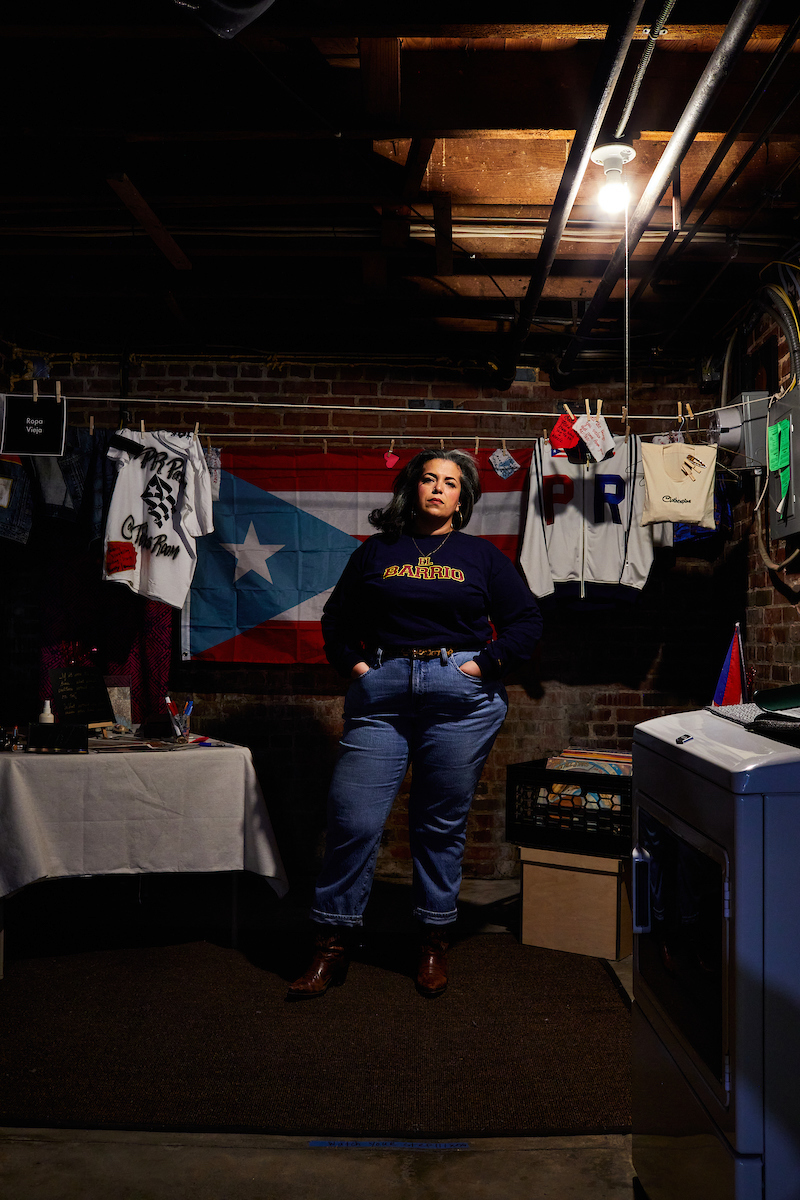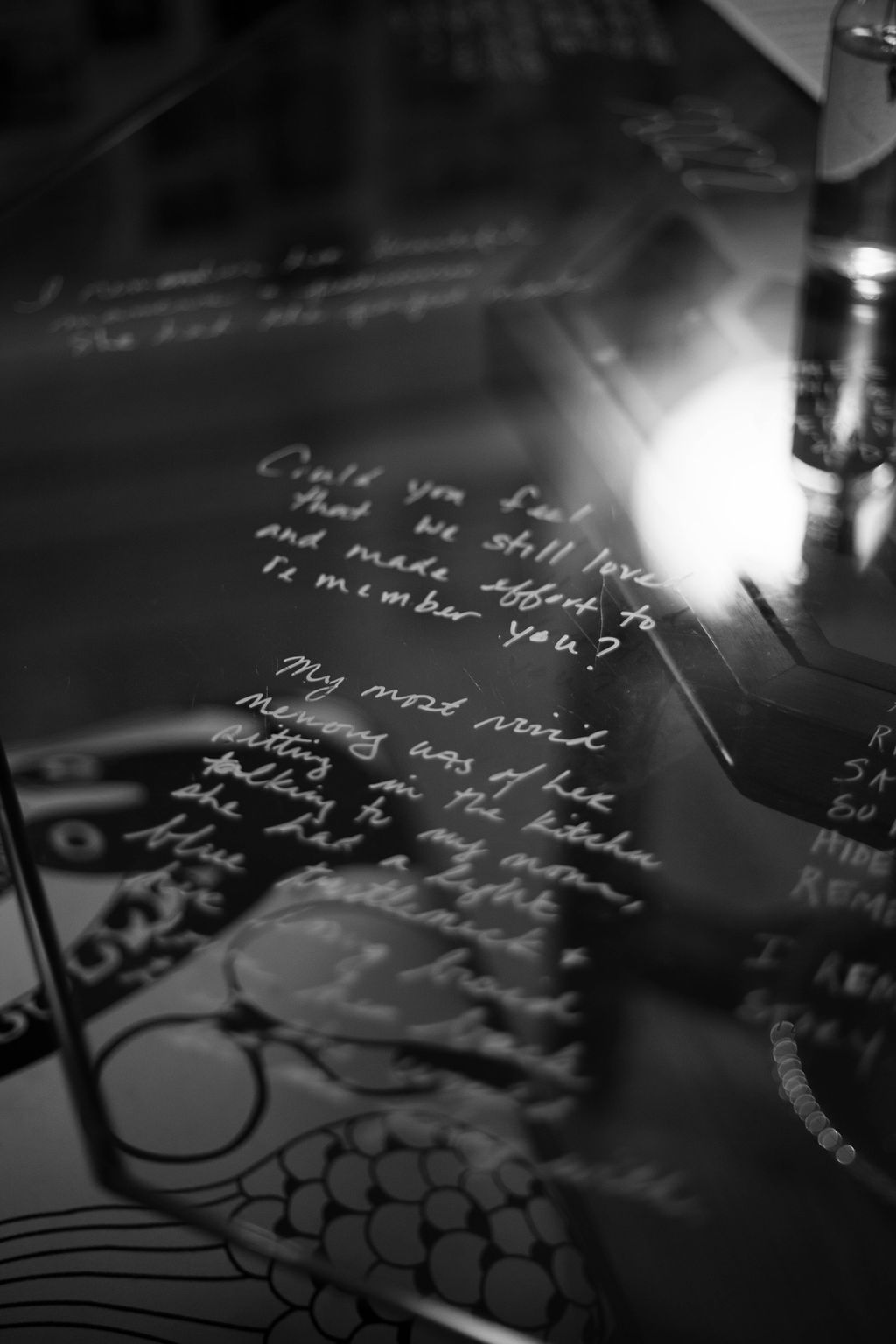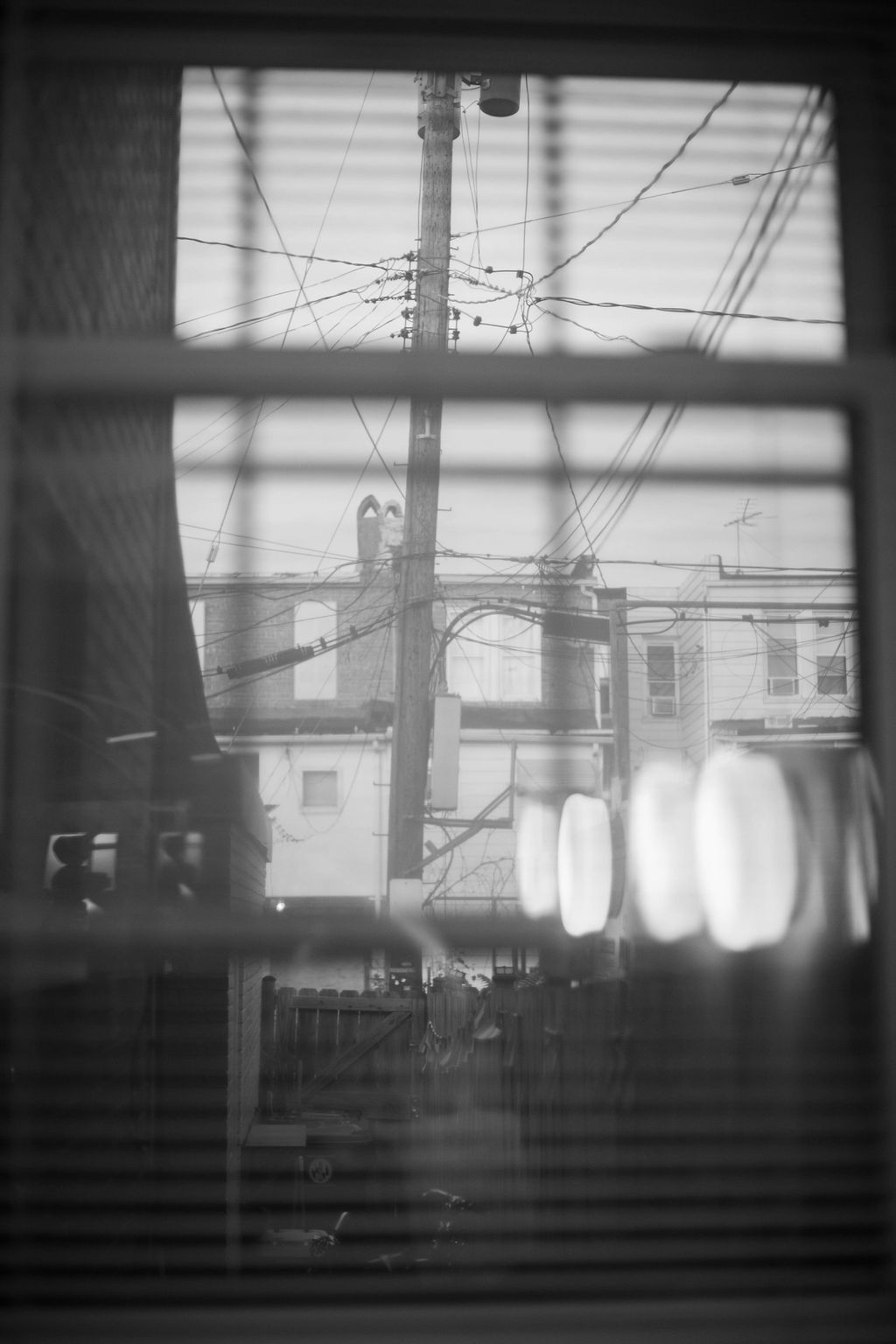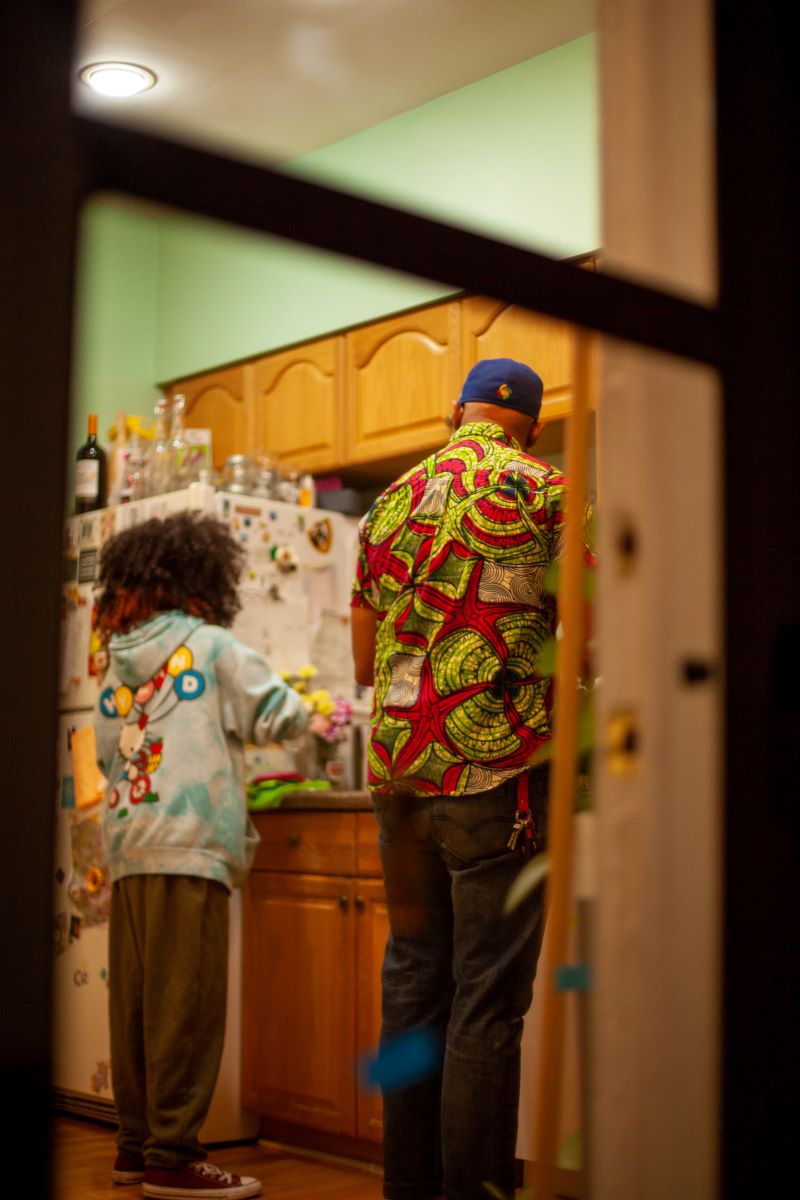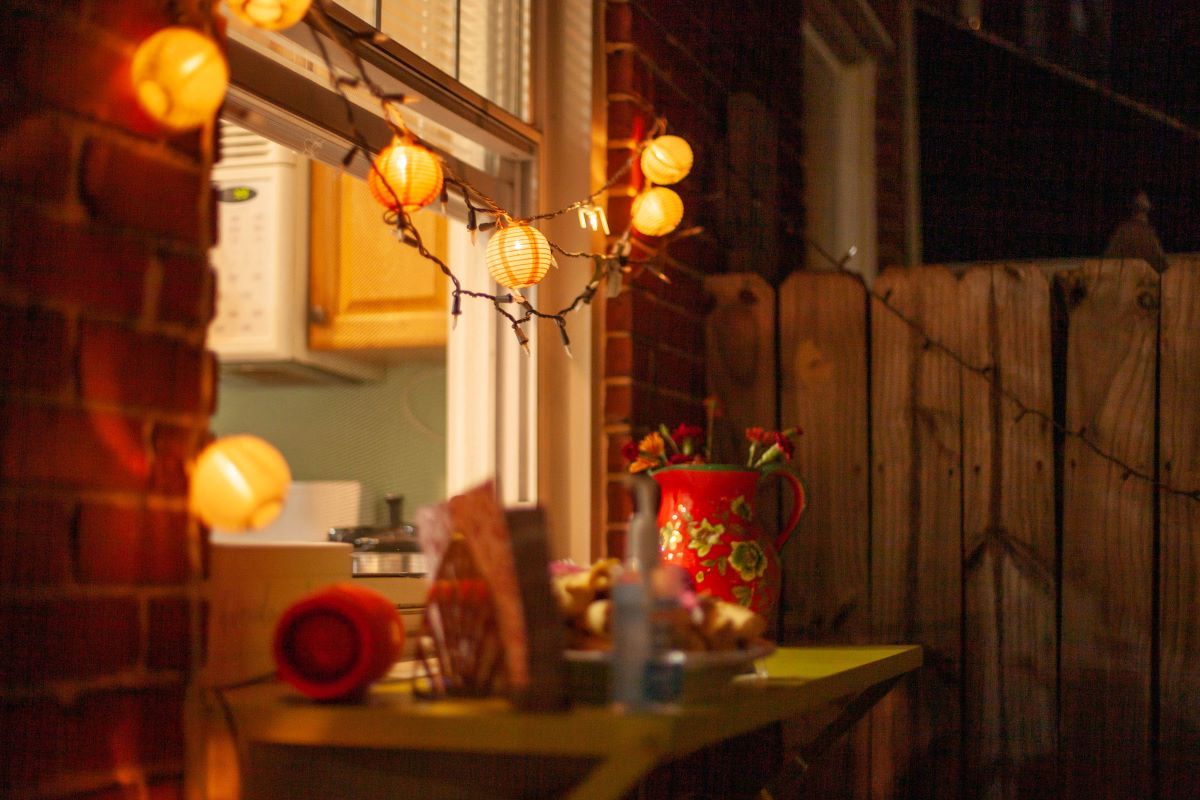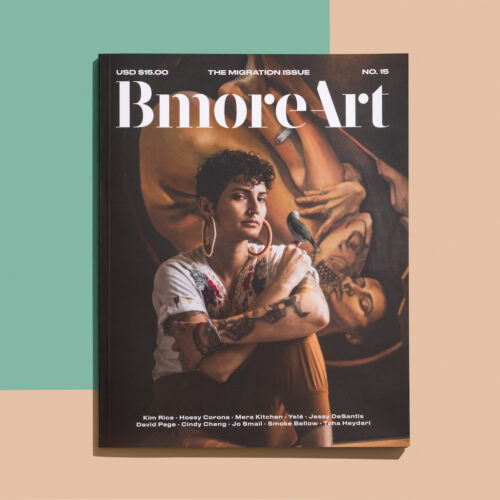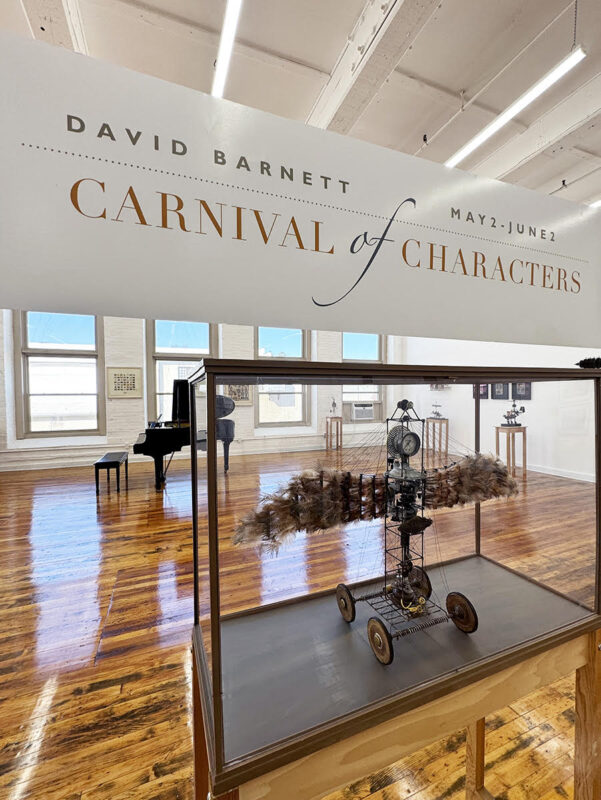Where did you find inspiration to start Tola’s Room? Tell us about how it started and how it has changed over the years.
My experiences inspired Tola’s Room as an artist and educator and community organizer. I’ve always wanted to be an entrepreneur and have a business using a collective space concept. When I purchased my home in 2006 in Northeast Baltimore, it was everything that I wanted, a large turn-key home with elements of historic charm, and I instantly sensed a vision for the basement and detached garage.
Fast forward, I lost my dad suddenly in 2013, a day before Tola’s first birthday. As I dealt with his estate and cleared through the things he left behind, it was like opening a time capsule, memories of the past flooding my mind. It was a re-learning of him, my parents, and so much about myself. This experience gave me a renewed sense of self as a woman, a woman of color, and as a Puerto Rican. I wanted to honor my father and express my newfound pride creatively through my photography, so I developed a series entitled, Relics of My Father.
In 2020, when the pandemic hit, I no longer had barriers of time and a scheduled routine to keep me distracted. I felt the need, as many did, to propel my creative ideas forward. I started to brainstorm with the help and support of my family, using my skill set of designing, organizing, and managing events, people, and spaces. After about five months of planning, I took the plunge and created an appealing design in my home that told my story, honoring my father, my family, and my culture. So on June 12, 2021, an interactive culture museum concept entitled Puerto Rican Passion was launched. It was our first time doing a project in a permanent location. The space paid homage to the Puerto Rican and Nuyorican cultural experience and history, hoping to influence and inspire others to share their cultural stories. The museum drew on personal cultural perspective, lineage, and experience. It was designed to entice the senses and invoke feelings of family and home through food, music, and multiple interactive art experiences.
Some of the sections, including La Casita de Tolita (Tola’s little house), were designed based on memories I had as a child when walking home from school in New York City. I would see “casitas” on vacant lots or junkyards, always sensing friendship, joy, and celebration from the people. In my research, I later learned that these “casitas” were ways Puerto Ricans held onto their cultural experience of “la isla,” creating spaces that reminded them of home. In La Casita de Tolita, participants gather, laugh, dance, and celebrate.
Ropa Vieja, which means old clothes, was an interactive experience. Clothes from my childhood were hanging from the clothesline. The background of that story comes from my experience as a kid watching my mom put clothes out on the clothesline. Folks were then invited to write their thoughts around culture on pieces of fabric and put them up on the clothesline.
The Shrine paid homage to my ancestors. It started with a space designed to celebrate the life of my father, Edwin Delgado. He was a proud man, a proud Puerto Rican, a proud New Yorker, and a proud veteran.
My design encouraged participants to read papers and books, view pictures, touch objects, and play vinyl records, all things that belonged to him. This experience ended in reflection. I prompted the viewer to sit, pray, stare, and to be in thought. I used an altar-like design that included prayer cards dating back to the funeral of my grandfather, Vicente Delgado, and moved in sequential order to other loved ones passing.
In 2022, we had our first-anniversary event entitled I ♡ PR Passion, a play on “I ♡ NY.” We celebrated the space growing from the first basement floors to the entire home. We remixed some of the spaces; the mindset around that design was a cleaner and more streamlined feel. During the anniversary event, we unveiled the opening of the third floor and the new designs. This particular exhibition was called A Series of Love Letters. The idea was that these smaller spaces were telling a love story or sharing a story of love for the different people and places that helped me become who I am.
One of the things I was most proud of from that experience was Ropa Vieja Remix. From these fabrics that participants wrote on in the previous year, I wanted to do something a little bit more unique with them, but wasn’t sure what at first. As time evolved, I thought of putting these pieces of fabric on the old clothes hanging on the line. From that, I further deepened the story by wanting to have some kind of show or performance piece where people could see these clothes and share my representation of a story of indigenous roots, rich cultural experiences, and how that’s evolved over time: the matriarch, the offerings, the family greetings, the celebrations, the music. I was able to partner with Aszana Bell-Lopez, a Baltimore and New York-based fashion designer. She helped me to curate the patch design, the stitching, and the location of the patches. We took these pieces of fabric and put them on the “ropa vieja” I had collected over the years. Then the performance piece grew from a little bit of acting and performance art into a fashion show.
